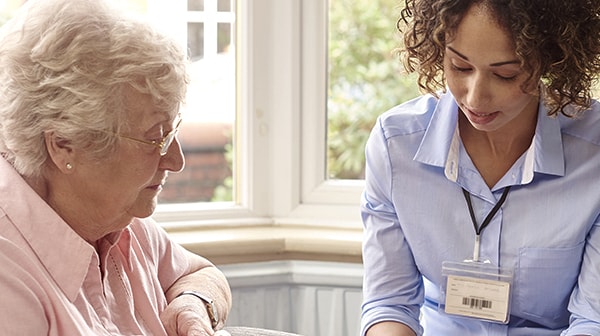Healthcare for an ageing population
How Australian healthcare will meet the challenge of providing for the increasing number of people living longer.
Health Agenda magazine
October 2016
Many Australians can now look forward to living a longer life. A girl born in 2012 can now expect to live until she is a little over 94. A boy born at the same time will reach the age of 91.
The number of men and women aged 75-plus will rise by 4 million between 2012 and 2060 and so will the number of Australians receiving a congratulatory letter from the Queen or future king to mark their hundredth birthday. While in 2012 there was roughly one person aged 100 or more for every 100 babies, by 2060 there will be about 25 such centenarians.
But a larger aged population will have a very real and significant impact on the public purse. Healthcare, the age pension and aged care will be the top three budgetary pressures over the next 50 years, according to predictive forecasting by the Federal Government’s 2013 An Ageing Australia: Preparing for the Future paper.

Living well
Professor Marita McCabe, Director of the Institute for Health & Ageing, says that with a burgeoning ageing population it’s more important than ever that people who live longer lives also live well, both physically and mentally.
“Previously people lived into their seventies and their health was still okay,” she says. “Now we’ve got people living into their eighties and nineties, and there’s greater likelihood that their physical and mental health will be compromised”.
“The health system has to be protective of their health and that is something that we need to think about in middle age, rather than waiting until people are in their seventies or eighties.”
The need for innovation
The pressures on our healthcare system are not only financial. The nation’s healthcare workforce – the doctors, nurses and others who provide care – is also growing older.
“A lot of our health workforce is ageing and we are going to struggle to fill the gap, so while the number of older people is rising and we have a growing demand for health services, we have a shrinking health workforce,” says Dr David Hansen, the CEO of the Australian e-Health Research Centre, a joint venture between the Commonwealth Scientific and Industrial Research Organisation (CSIRO) and Queensland Health.
So how is Australia preparing for the extra future demands on our healthcare system?
Prevention is better than cure
While the government has introduced a number of campaigns to tackle some of Australia’s biggest health issues, such as obesity, smoking and skin cancer, even greater efforts are needed to reduce the physical and financial tolls of chronic disease as we age.
“We know a lot about what you can do to maintain your health in older age – stop smoking, stay physically active, be cognitively stimulated and socially connected,” says Associate Professor Briony Dow, Director of the National Ageing Research Institute.
“But,” she qualifies, “we’re not getting those messages out there strongly enough. We are going to live longer and if we want to live well maintaining our health is key."
Supporting initiatives include campaigns such as September, which encourages people to take 10,000 steps a day for 28 days straight. The campaign also encourages other types of physical activity from Pilates and water skiing to tennis and cycling.
Setting healthy habits early in life so they become ingrained and carried through adulthood is also a government focus in the Get Set 4 Life initiative. The project has been developed by the CSIRO and is a practical guide to encourage healthy eating, exercise, oral health, good sleep patterns and sun protection in children.

Harnessing ehealth
Dr Hansen believes that ehealth will be critical to accommodating many of the extra pressures that will fall on Australia’s healthcare system.
“Ehealth means using information and communication technology to change and improve the health system right across the spectrum of healthcare,” he says.
“The use of information and communication technology will have to be stepped up to increase the way in which we deliver services. For someone living at home the ability to not have to go to a doctor, to not have to have someone come in and check on them as frequently, to be able to talk to their doctor using telehealth – that technology is part of the ehealth revolution.
“Even in the narrower sense, the ability to collect and share data on someone’s health status will underpin innovations in the way we deliver healthcare in Australia.”
Dr Hansen cites the national electronic health records system as an example of ehealth working well, describing it as a “great piece of national infrastructure to build on”.
“If someone ends up in hospital, doctors can look at their record and find out what medications they take and if they have other illnesses. With a more transient ageing population and a changing health workforce, this is important,” he says.
Home-based health
Technology is also easing pressures on the healthcare budget by enabling more care in the home.
HCF has partnered with the healthcare start-up Curo, which uses a sensor system in the home to monitor a person’s movement and activity. Any change in usual movement patterns is used to help identify possible slips and falls, and is reported directly via smart phone to a care-giver, who can then take appropriate action. The aim of the technology, trialled in New South Wales, is to enable people to remain in their homes for longer.
“The trick is to make the technology part of peoples’ lifestyle so they can live independently but connect with people to get help when they need it,” Dr Hansen says.
A complete approach
The Institute for Health & Ageing’s Professor McCabe believes that, while there are many initiatives being designed and introduced to maintain our healthcare system, we need to ensure they work together and that care for the ageing is holistic.
For example, a University of Western Sydney study found Australians who are middle aged or older are more likely to walk and take part in physical activity if there is more than 20 per cent green space within a kilometre of their homes. This highlights the need for careful planning at a time when most Australian cities and towns are becoming more densely populated.
At any given time, one in five Australian workers is likely to be experiencing a mental health condition and so initiatives that support mental health as part of day-to-day wellbeing will also play an increasingly important role in the health of Australians.
The Mentally Healthy Workplace Alliance and the beyondblue organisation have recognised this with the launch of the Heads Up initiative. It is all about giving individuals and businesses the tools to create more mentally healthy workplaces.
The program encourages managers to acquire a basic understanding of mental health conditions, stress management and the importance of regularly checking in with colleagues, as well as how to recognise signs of anxiety or depression in their staff.
“We need programs in place that are appropriate for physical health and mental health, and we need to look at the built environment and ensure there are green spaces where people live that are conducive to physical activity,” says Professor McCabe. “It has to be a whole-of-person approach to health.”